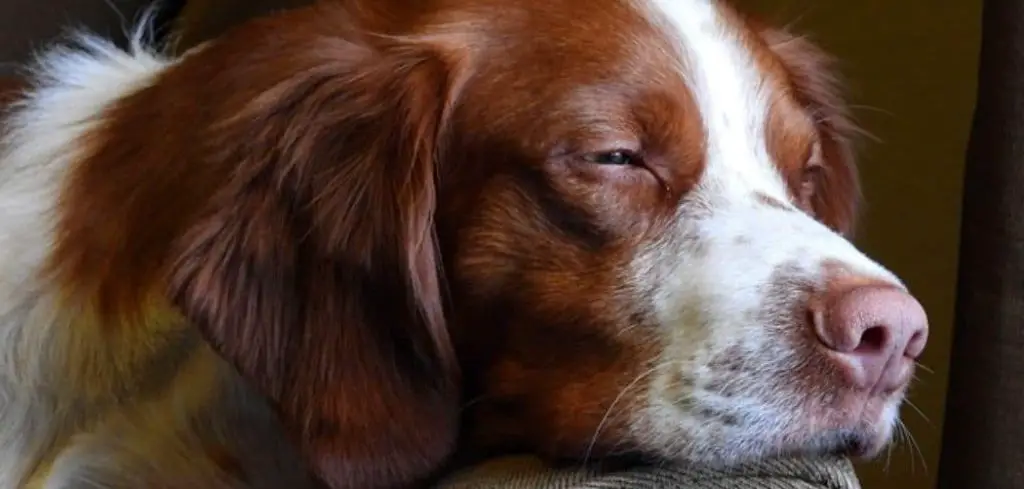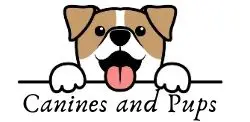If your dog is breathing heavily and drooling at the same time, it could be more than just a sign of being overheated or excited.
While occasional panting and drooling are normal, excessive or sudden heavy breathing and drooling can point to serious underlying conditions.
We outline the causes of dog breathing heavy and drooling, what they might mean for your pet’s health, and when it’s time to seek veterinary help.
Table of Contents
Here’s Why Dog Breathing Heavy and Drooling Happens
Heavy breathing and drooling in dogs can be signs of stress, pain, overheating, poisoning, or a serious medical issue like heatstroke, respiratory distress, or heart problems.
While occasional panting and drooling may occur after exercise or in warm weather, persistent or excessive symptoms—especially if accompanied by weakness, pale gums, or disorientation—warrant immediate veterinary attention.
These symptoms may indicate that your dog is struggling to regulate temperature or suffering from an internal issue that needs urgent care.

Understanding Dog Breathing Heavy and Drooling
Heavy breathing in dogs, also known as tachypnea, is characterized by rapid or labored breaths. This is not to be confused with normal panting after exercise or excitement.
Drooling, or hypersalivation, occurs when there is excessive saliva production or when your dog is unable to swallow their saliva normally.
Seeing both symptoms together—your dog breathing heavily and drooling—can indicate a range of health issues, some of which may require immediate medical attention.
Common Signs When Dogs Breathe Heavy and Drool
Before diving into the causes, it’s helpful to understand what signs to look for when your dog is breathing heavy and drooling. These include:
Open-mouth breathing with exaggerated chest movement
Thick ropes of saliva hanging from the mouth
Excessive panting even while resting
Gums that appear pale or blue
Lethargy or signs of weakness
Difficulty swallowing
Whining or signs of distress
Causes of Dog Breathing Heavy and Drooling
Several factors can trigger heavy breathing and drooling in dogs. These range from mild and temporary to severe and life-threatening:
1. Heatstroke
One of the most common and dangerous causes of heavy breathing and drooling in dogs is heatstroke.
Dogs do not sweat like humans. Instead, they regulate body temperature by panting, which increases when they are overheated.
However, when a dog can’t cool down efficiently—such as being left in a hot car or overexerted in hot weather—body temperature can rise rapidly. This leads to:
Rapid, labored breathing
Profuse drooling
Vomiting or diarrhea
Red or pale gums
Collapse or seizures
Move your dog to a cool area immediately, offer small amounts of water, and contact a vet urgently.
Heatstroke is a medical emergency.
Related: Drooling and Yawning (Explained)
2. Stress and Anxiety
Dogs often exhibit heavy breathing and drooling when they are anxious or scared.
This can occur during thunderstorms, fireworks, travel, or vet visits.
Stress triggers the release of adrenaline, which increases heart and respiratory rates, resulting in:
Fast breathing or panting
Pacing or restlessness
Shaking
Lip licking and drooling
Some breeds, particularly smaller or more sensitive dogs, are more prone to stress-induced symptoms.
Remove your dog from the stressor, provide a quiet space, and consider calming aids or behavior modification techniques if anxiety is frequent.
3. Nausea and Gastrointestinal Distress
Dogs experiencing nausea due to an upset stomach, ingestion of foreign substances, or illness often drool excessively.
This is because nausea triggers saliva production.
Additionally, heavy breathing may accompany nausea due to discomfort or pain.
Causes may include:
Motion sickness
Ingesting toxic foods or plants
Gastric torsion (bloat)
Pancreatitis
If your dog is drooling, breathing heavily, and showing signs like vomiting, lack of appetite, or abdominal bloating, consult your vet immediately.
Related: Dog drooling and jaw chattering (Explained)
4. Poisoning or Toxin Exposure
Exposure to toxins—such as pesticides, cleaning products, human medications, or toxic plants—can result in heavy breathing and drooling as the body attempts to eliminate the harmful substance.
Other signs of poisoning in dogs include:
Tremors or seizures
Vomiting or diarrhea
Unsteady walking
Pupil dilation or constriction
Foaming at the mouth
If poisoning is suspected, seek emergency veterinary help. Bring a sample of the substance or packaging to aid diagnosis.
5. Dental or Oral Issues
A common reason for dog drooling and heavy breathing can be problems in the mouth, such as:
Gum infections (gingivitis)
Tooth abscesses
Foreign objects stuck in the mouth
Mouth ulcers or tumors
These can cause pain that leads to drooling, while discomfort can also cause panting or rapid breathing.
Check your dog’s mouth (if safe) and consult your vet if you notice swelling, bleeding, or bad breath.
6. Respiratory Problems
Heavy breathing in dogs is often linked to respiratory infections or disorders, which may also cause drooling due to the dog being unable to swallow comfortably.
Potential conditions include:
Kennel cough
Pneumonia
Tracheal collapse
Laryngeal paralysis
Lung disease
Breeds like Bulldogs, Pugs, and Boxers—known as brachycephalic breeds—are especially prone to breathing difficulties due to their short nasal passages.
Any breathing issue should be evaluated by a vet, especially if your dog seems to be struggling for air or shows bluish gums.
7. Heart Problems
Dogs with heart disease or heart failure may breathe heavily because their hearts struggle to pump blood efficiently, leading to fluid buildup in the lungs.
Symptoms may include:
Persistent panting at rest
Coughing
Exercise intolerance
Pale gums
Lethargy
Drooling may occur when the dog is too weak to swallow saliva properly.
Seek veterinary care. Heart conditions are manageable with the right treatment but require a timely diagnosis.
8. Neurological Conditions
Seizures and other neurological disorders can lead to episodes of excessive drooling and heavy breathing, especially during or after a seizure.
Other neurological signs include:
Disorientation
Pacing or circling
Sudden aggression
Muscle twitching
Loss of balance
If your dog shows these signs, seek immediate veterinary attention.
Keep them safe and prevent them from injuring themselves during episodes.
9. Pain and Internal Injury
Sometimes, a dog may breathe heavily and drool due to internal pain or injury.
Pain increases stress, which triggers rapid breathing and often panting.
Drooling can occur when swallowing is painful or uncomfortable.
This can be caused by:
Trauma or internal bleeding
Tumors or cancer
Orthopedic pain like arthritis
Abdominal issues
If your dog appears distressed, limps, or is reluctant to move or eat, consult a veterinarian for a full evaluation.
When to See a Vet for Heavy Breathing and Drooling
If your dog is breathing heavy and drooling for more than a few minutes or if other symptoms are present, don’t ignore it.
Immediate veterinary care is crucial when:
Symptoms come on suddenly and severely
Gums are pale, blue, or purple
The dog collapses or is unresponsive
There is a suspected toxin ingestion
The dog is a puppy or senior (more vulnerable to rapid deterioration)
What You Can Do at Home (While Seeking Vet Help)
Stay calm: Dogs pick up on your emotions. Keep a soothing tone and limit stimulation.
Provide water: If your dog is alert, offer small amounts of fresh water.
Cool the dog down: Use a fan or cool damp cloth if overheating is suspected.
Do not medicate: Never give human medication unless prescribed by a vet.
Record symptoms: Note when the breathing and drooling started, and any potential triggers like diet changes or activity level.
Final Thoughts: Heavy Breathing and Drooling in Dogs
A dog breathing heavy and drooling can be a normal response to stress or exertion—but it can also signal something much more serious.
From heatstroke and poisoning to heart disease and seizures, this symptom combination should never be ignored if it appears out of context or is prolonged.
Timely intervention can save your dog’s life. If you’re ever unsure, it’s always safest to consult your veterinarian.
Understanding your dog’s normal behaviors and being alert to changes is one of the best ways you can care for their health and well-being.
